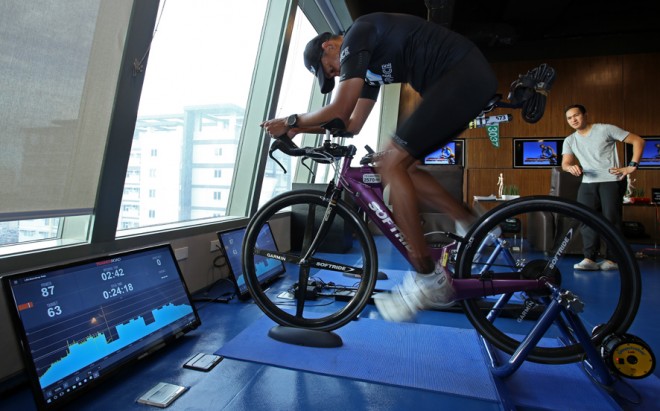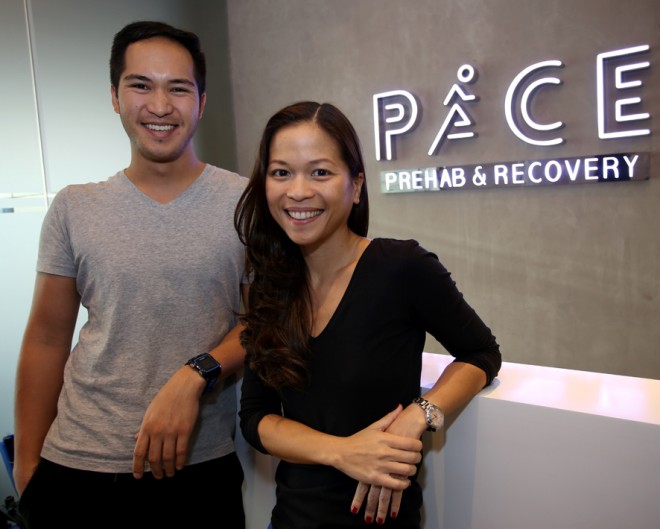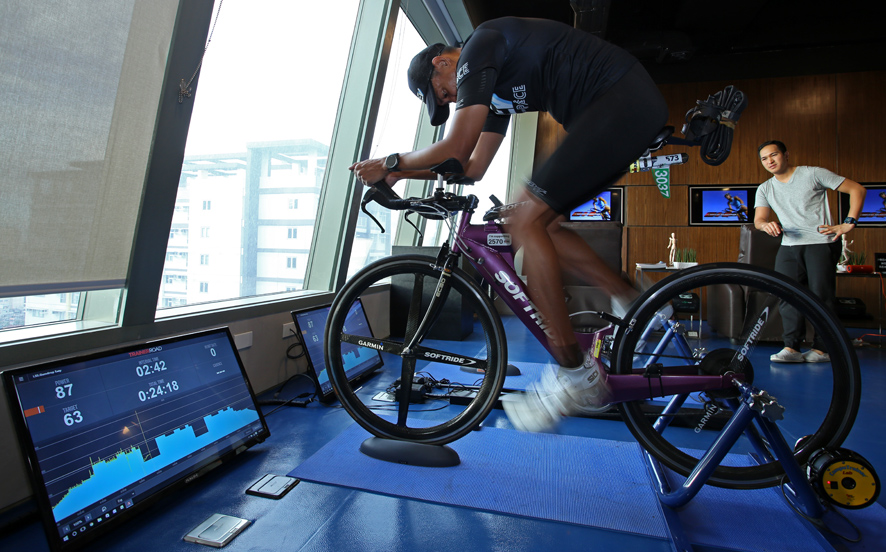
What if you knew you were anatomically and physiologically predisposed to developing a knee injury? Would that dissuade you from pursuing your running goals?
At the newly opened PACE Prehab & Recovery, experts not only have access to the latest sports science and technology equipment to determine injuries before they actually happen, but they also advise you in real time how you can prevent them from ever happening so your training is not interrupted.
It’s a technology that analyzes, for example, how much movement happens in the knee. Is there pain during flexing and extending? Does it twist as it bends? Does it rotate and bend at the same time during a jump, or is there no movement at all?
These, among other things, are considered before correcting the running form tailored to the requirement of a client.
High-speed cameras are also in place so that each movement can be isolated, analyzed frame by frame, during movement.
“We are not doing guesswork. We have the technology to give us the exact data so that we can get you to where you want to go,” said Francis Diano, managing director of PACE.
Proactive approach
Diano has a clinical doctorate in physical therapy. He is an orthopedic board-certified specialist, sports board-certified specialist, certified orthopedic manual therapist, and certified strength and conditioning specialist.
He is also the only certified United States of America Triathlon Coach (Usat) in the Philippines, and has certifications in clinical Pilates and fitness nutrition.
“Prehab is preventive, with emphasis on the ‘pre-.’ It is a proactive approach to screening movement deficiencies and the potential for injury,” said triathlete-lawyer Shy Sison, PACE director of operations, who owns the facility with three other athletes.
But prehab is not only for athletes, Sison said; it’s for anyone experiencing any form of discomfort or pain, or movement deficient pattern, like the inability to raise an arm over the head.
If you can’t do a simple activity without modifying it, most likely something is not right.
Someone who attends Zumba but can’t give it his/her 100 percent due to physical discomfort, for example, can have himself/herself checked.
Or someone who can’t walk longer than 20 minutes without feeling pain but plans to visit Europe soon, a continent best discovered on foot, can get checked to find walking pleasurable again.
There is even a lady in her mid-70s, Diano said, who regularly visits for checkups. All she wants is the ability to once again tie her hair and scratch her back when needed.
“There’s one who just gave birth and can’t lift her bag anymore. It’s not an injury but a current state in their body that they need to recover from,” Diano said.
Bringing X-rays and other images is not even necessary. Diano said he needs to see how a person functions and moves. The X-ray image is a static image that tells only one story.
In the US, he added, doctors send patients to five or 10 therapy sessions before asking them to get their images done. That’s because imaging is not directly related to the care doctors will prescribe to their patients, he said.
The exact opposite is practiced in the Philippines. That’s why Sison said they also put in time during consultation to explain their process to clients.
No Band-Aid solutions
“We don’t give Band-Aid solutions. We look at the root of the problem. We treat the body as a whole; we don’t chop it up. Your lower back pain could be due to weak abdominal muscles,” Diano said.
Recovery period after a long run or hard training day can now be cut short, as well.
PACE has Recovery Pump, a mechanical compression recovery system where sequential compression is released throughout a cycle to flush out lactate acids and relieve muscle soreness.
Diano said when the body breaks down muscles during a stressful physical activity, it accumulates a lot of cellular waste (lactic acid). Deoxygenated blood accumulates, but muscles can fully recover only when there’s muscle action.
What the pump does, he said, is help flush out the lactic acid out of, say, the legs, and transport the blood back to the heart to reoxygenate so that a fresh supply can go back to the legs.
The faster waste is pumped from the legs, the quicker one’s recovery is.
“This will improve the way the body circulates all these metabolic waste and speeds up your recovery period, so you bounce back a lot quicker,” Sison said.
It also offers Dorse VI, which captures and measures data as you move, whether you prefer exercising indoors or outdoors. These cutting-edge wearable sensors measure how you move, whether on a treadmill, track or trail. It captures data 200 times per second, highlighting any deficiencies that needed to be corrected.
Optogait analyzes and measures the body’s movement, mechanics and the way muscles are engaged while in motion. It can determine which leg you favor during movement, or how much pressure you put into each step, or whether you dip your hip a little too much when you run.
Just like any bad habit, it will take consistent training for bad form to finally be corrected.
PACE also offers lactate threshold tests and sports planning.
PACE Prehab & Recovery, 16th floor, MDI Corporate Center, 10th Avenue corner 39th St., Bonifacio Global City. Call 0915-6783600; visit PACE here.
Follow the author on Twitter and Instagram.














































